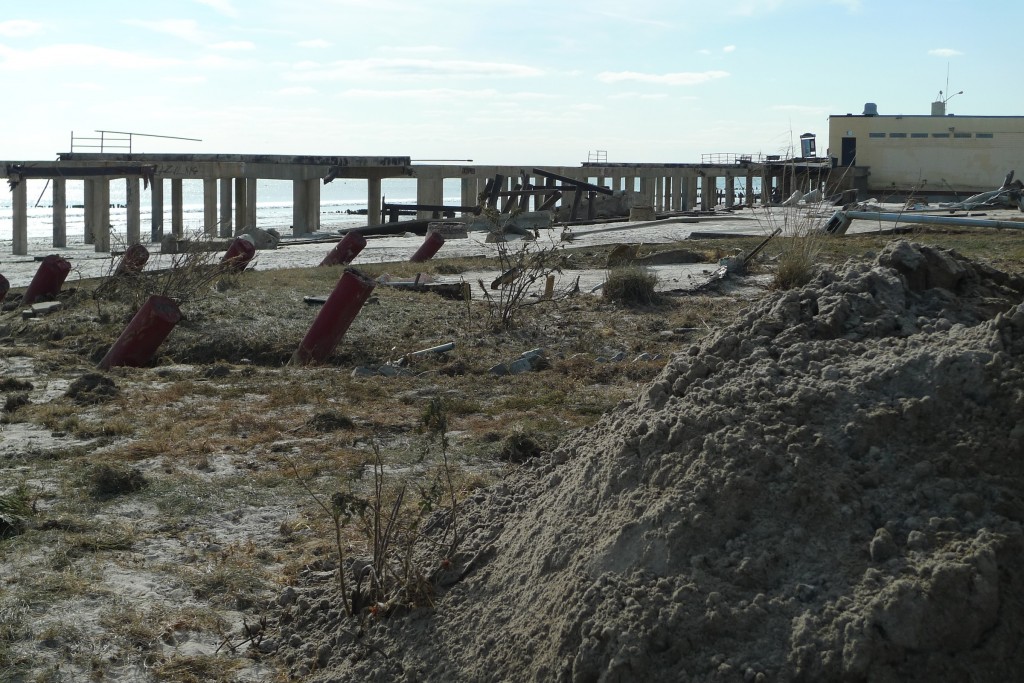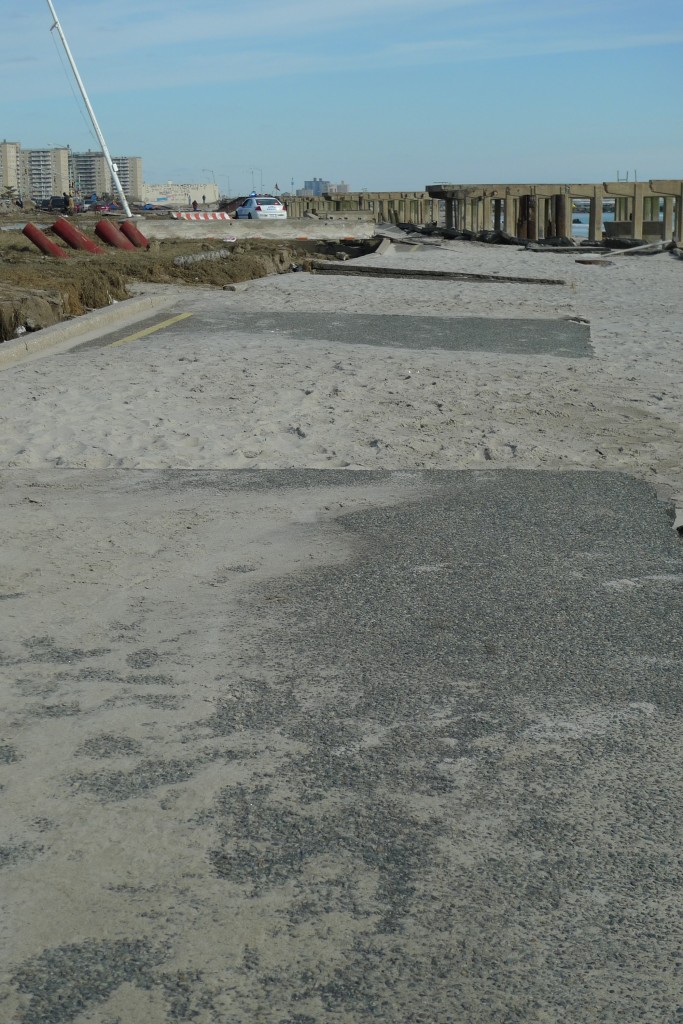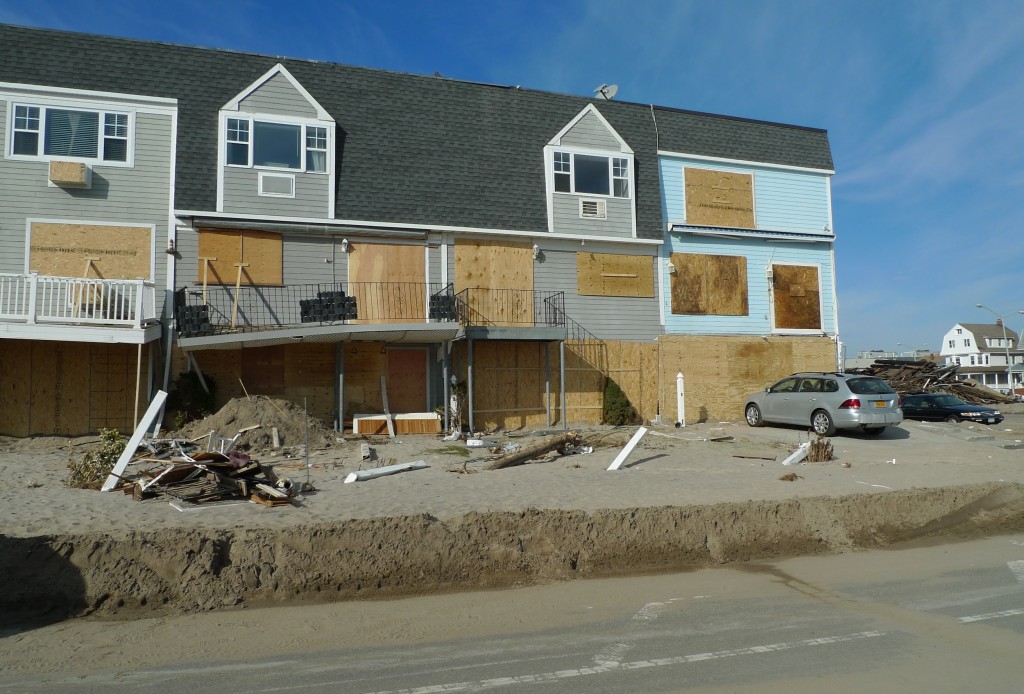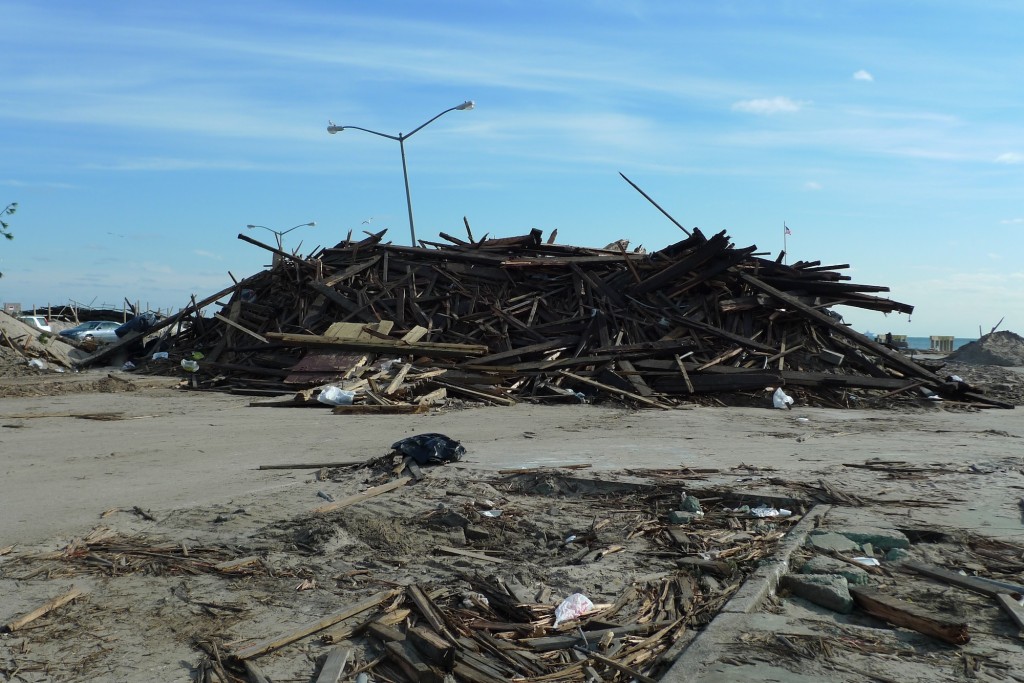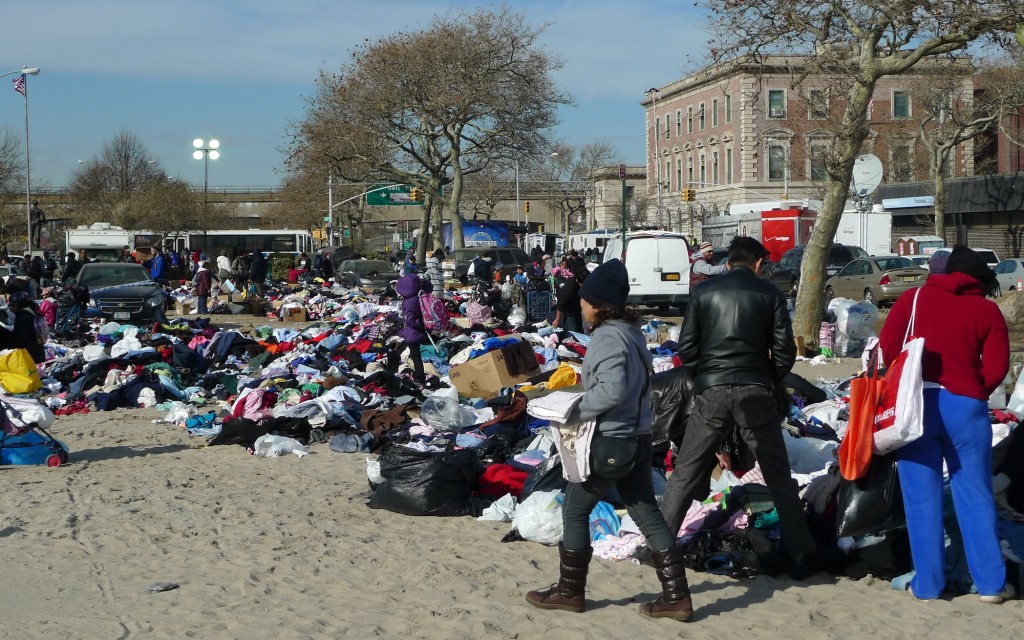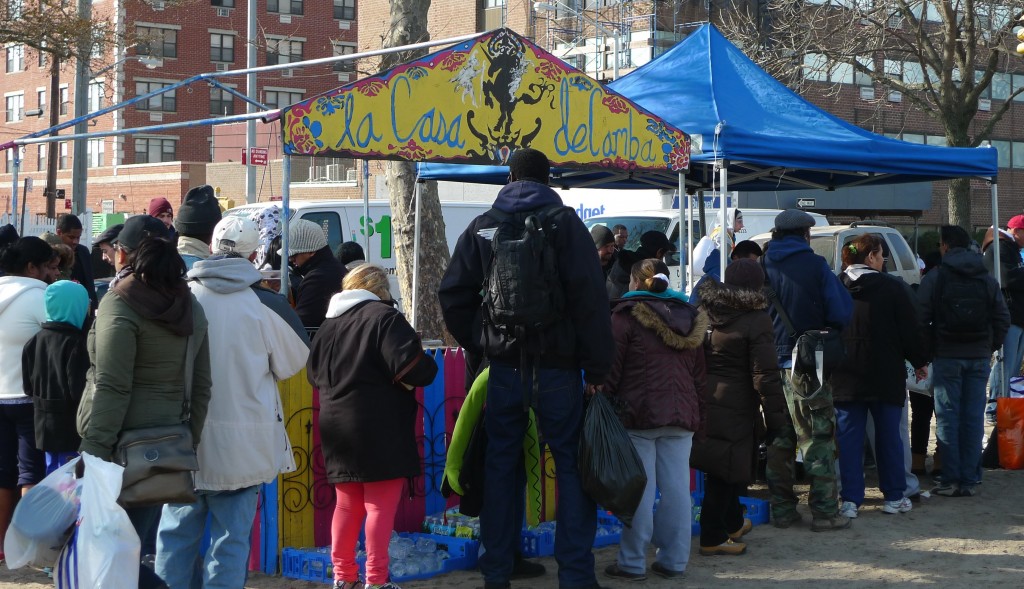Devastated suburbs, vulnerable city spaces, immense budget numbers, shortages of all kinds: welcome to Katrina on the Hudson. Today I drove to the Rockaways to drop off supplies and then around the South shore of Long Island. For someone who has done research on Hurricane Katrina, some things seemed very unpleasantly familiar, for all that the evacuations and mass transit system kept the death toll far lower.
We still don’t know the full extent of what happened. It’s looking as if the entire beach front from Jersey along Fire Island to Montauk has been devastated. Communities in the Rockaways are at the very earliest stages of recovery. Contamination by sewage and other toxic elements is palpable in places. Now the city council are talking about FEMA trailers becoming part of the cityscape until the New Year at least. People in New Orleans will be shaking their heads and saying “here we go again.”
The Rockaways are still a disaster zone. The coast is just devastated.
The sand has been piled up to create some passable roadways but others have simply disappeared.
While the houses closest to the water show most damage, there’s debris and ruined furniture awaiting garbage collection for miles.
You can see here that the accumulated sand in front of the house is about two feet thick. It’s a massive removal job to imagine disposing of all this sand and all the new wreckage.
Power stops long before the beach at about 157 Ave, just south of the Belt Parkway, two bridges away from the barrier island. I saw one power crew at work the whole time I was there. As planes going into Kennedy roar overhead, the only governmental presence was a few National Guard armored cars, some wandering police taking souvenir photos and a fire truck. No FEMA, no Red Cross.
There’s a very impressive mutual aid effort. Clothes donations fill the former beach parking lot. They’re going to be much needed. It was cold by day down by the water and temperatures are close to freezing tonight in New York. There were free food services too, cooking Mexican and Chinese.
As much as these efforts are amazing, they can’t meet the full demands of what’s needed here, as Nick Pinto pointed out in his blog:
Occupy Sandy is mobilizing an army of sincere and hardworking volunteers, and is working to assess the needs of residents. But they don’t have the earthmovers necessary to clear the streets of sand and rubble. They don’t have the ability to restore power to residents. The crisis in the Rockaways remains severe, and it’s looking less and less like a natural disaster and more and more like a failure of the state.
(Just to be clear, the photos above are not Occupy Sandy efforts). So what’s going to be crucial is shaping a new politics going forward that sustains the horizontal voice of the communities but also reconfigures the practices of the state. New York local politics have been a byword for corruption and incompetence for, well, centuries. Things have to change.
We need to acknowledge the full scope of what’s happening and how we have far more questions than answers. Driving around the South shore, it was clear at certain points that the massive sewage spills of the storm had not been dispelled. It can’t just be at the places where the stench is unmissable that this is a problem. What does it mean to say on the Long Island Power Authority website that some locations should
plan for the potential that power restoration could extend a week or more beyond November 7th [?]
That’s obfuscation pure and simple.
There are 57 schools closed indefinitely by the storm, nearly all in Brooklyn and Queens. How many of these have majority minority student bodies and what’s being done for them? Can we make the media move beyond their “coverage” resulting from placing a “reporter” in the rain, wearing an anorak, in some place that floods? How can we coalesce the new seriousness of social media into a functional citizen’s media?
There’s great urgency to help people in the immediate term, a short term need to restore functional social conditions and then comes the chance for change.
The next storm is already on the way.

